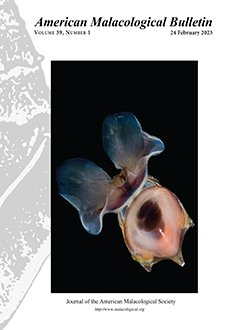As a major tributary to the species-rich Ouachita River and one of the few remaining non-channelized rivers in the Alluvial Plains physiographic division, Bayou Bartholomew is a key ecosystem for the freshwater mussel diversity of southeast Arkansas and northeast Louisiana. Bayou Bartholomew is known to contain 16 mussel Species of Greatest Conservation Need (SGCN) but the mussel assemblage of the Louisiana section of Bayou Bartholomew has not been assessed since the early 2000s. In 2021, we sampled over 100 river km on the main channel of Bayou Bartholomew and four tributaries from just downstream of the Louisiana/Arkansas border to the confluence with the Ouachita River. We used a novel two-phase timed-search protocol to characterize the mussel assemblage and measured shell length (long axis) to determine the size distribution of each species encountered. A suite of relevant habitat variables and site attributes were also quantified or qualitatively noted. One site was selected for sampling using a grid survey to determine quantitative estimates of mussel density. Our survey confirmed the presence of 35 species including 12 SGCN in the Louisiana section of the Bayou Bartholomew drainage. In total, 3,292 live mussels representing 33 species were collected in the main channel, 234 live mussels representing 18 species were found in a quantitative grid, and four species were found in tributaries. Two additional species were only found in tributaries as dead shells. Length frequencies of all common and abundant species indicated ongoing annual recruitment. Patterns of ubiquity in the main channel of Bayou Bartholomew varied by species, and mussels were rare in the tributaries. Generalized linear modelling and non-metric multidimensional scaling analyses identified relationships between mussel assemblage composition and the distance from the confluence with the Ouachita River and habitat variables including substrates, depth, and mesohabitat types. A comparison with previous studies did not provide any evidence of major changes in overall mussel species distributions or occurrence in Bayou Bartholomew in Louisiana. We attribute the apparent stability in the mussel assemblage to the fact that major anthropogenic alterations such as channelization, impoundments, and watershed urbanization have been minimal since the earlier studies, and we conclude that Bayou Bartholomew will likely continue to be a hotspot of regional mussel diversity and a haven for several of Louisiana's SGCN if large-scale anthropogenic alterations to the system do not occur and management actions are taken to protect and allow for the persistence of heterogenous habitats.
How to translate text using browser tools
23 February 2023
Status and Distribution of Freshwater Mussels in the Louisiana Section of Bayou Bartholomew
Gerald R. Dinkins,
Augustin C. Engman,
Brittany Bajo-Walker,
Z. Winston Clark,
Justin Wolbert,
Kyler Hecke,
J. Brian Alford
ACCESS THE FULL ARTICLE
<
Previous Article
|
aquatic mollusks
endangered species
extirpated species
Unionidae





